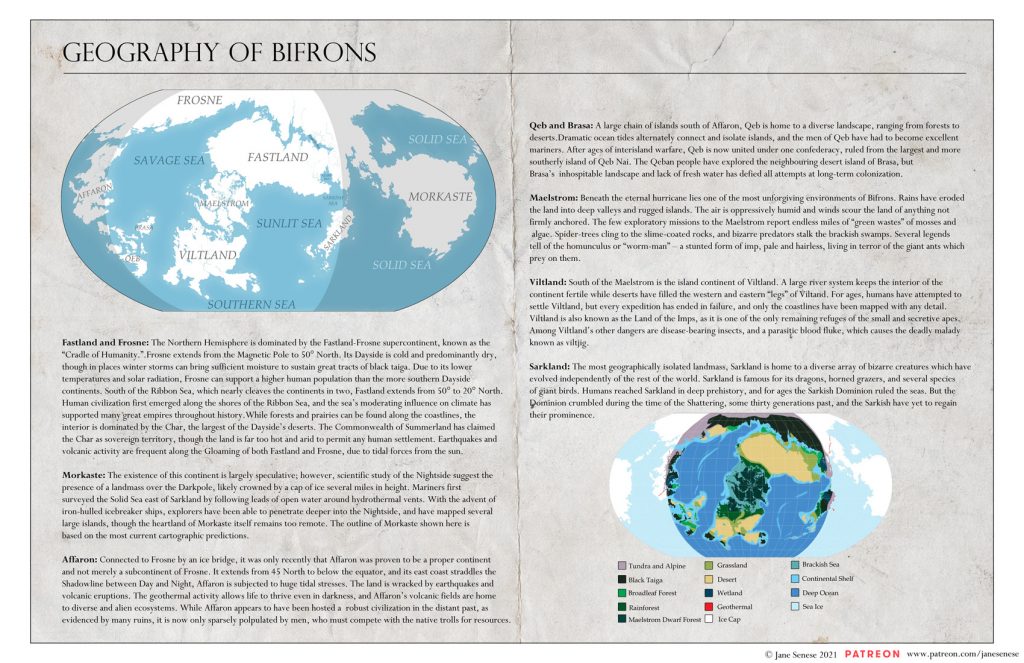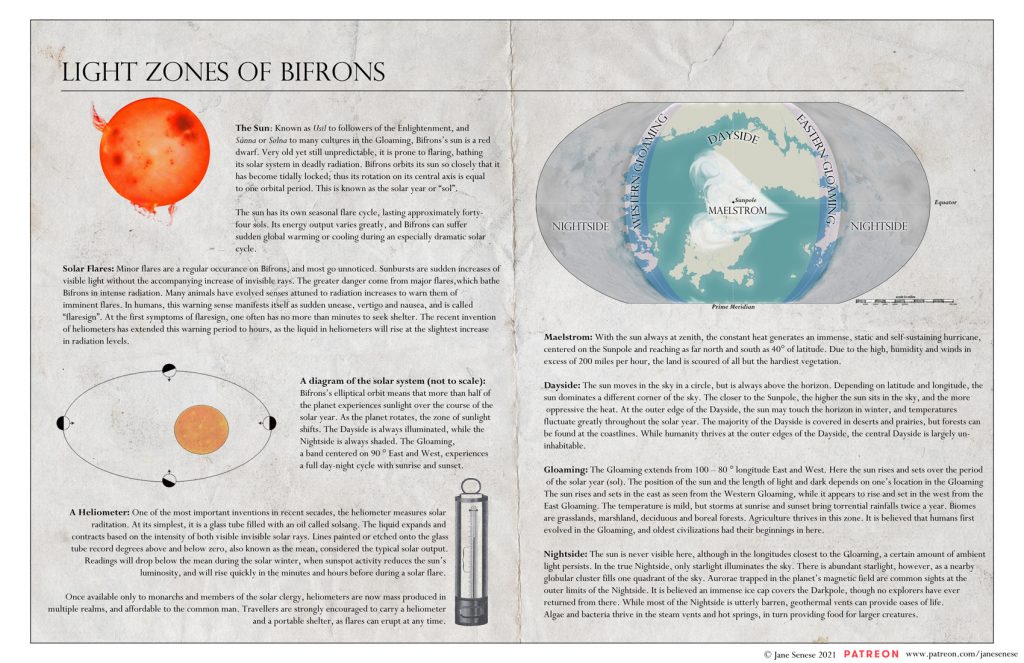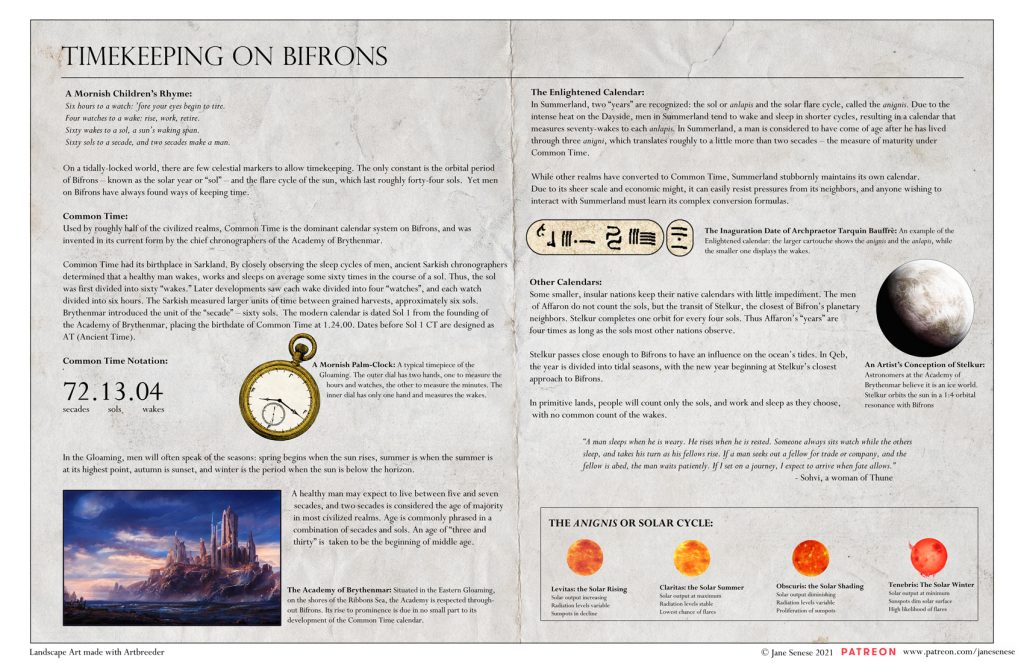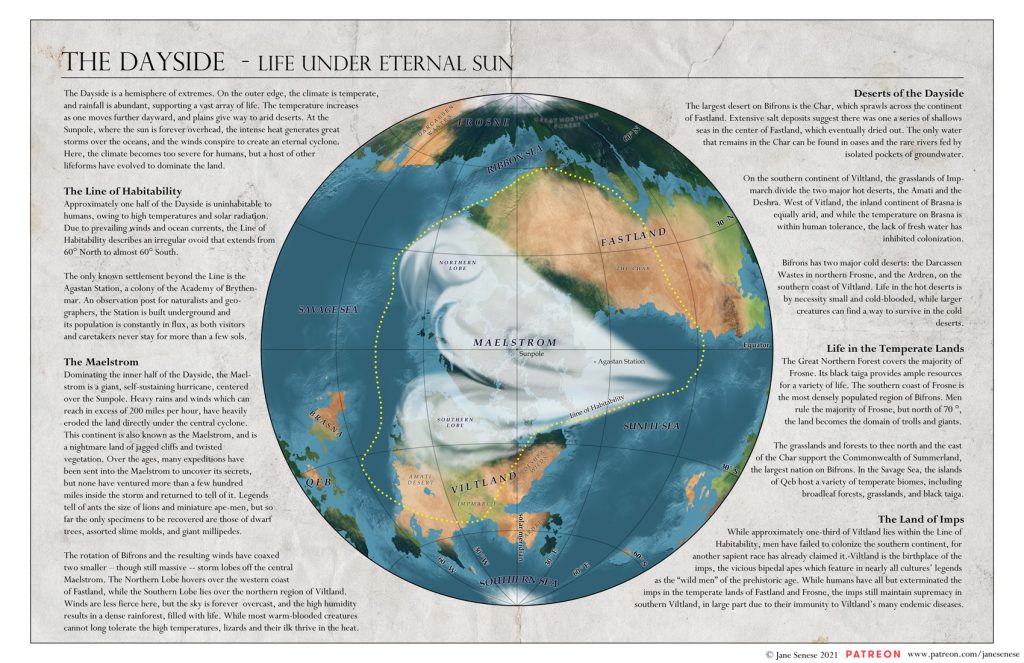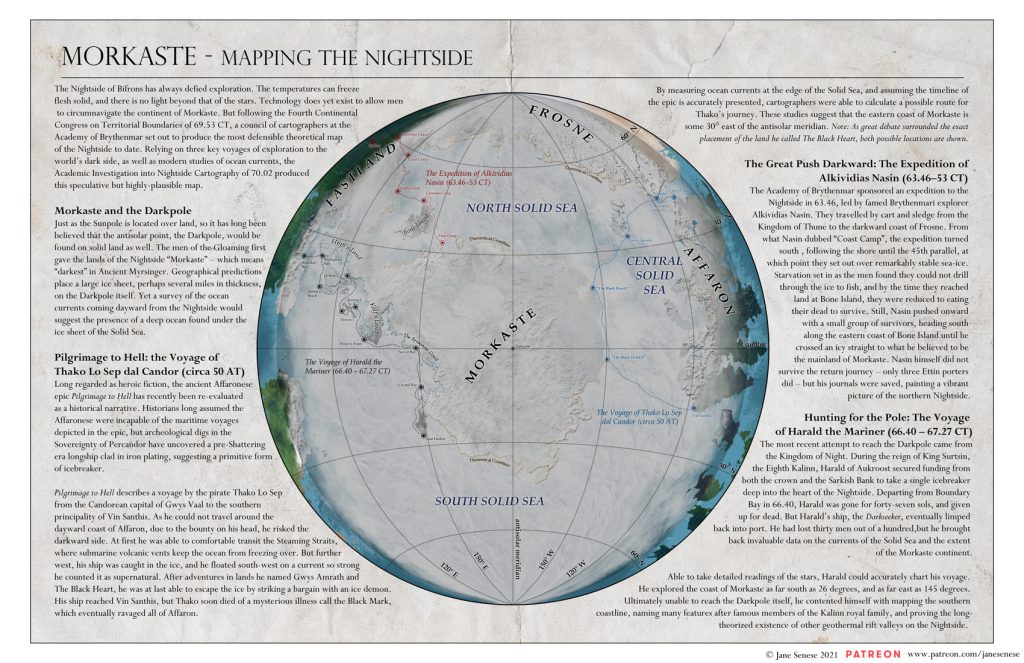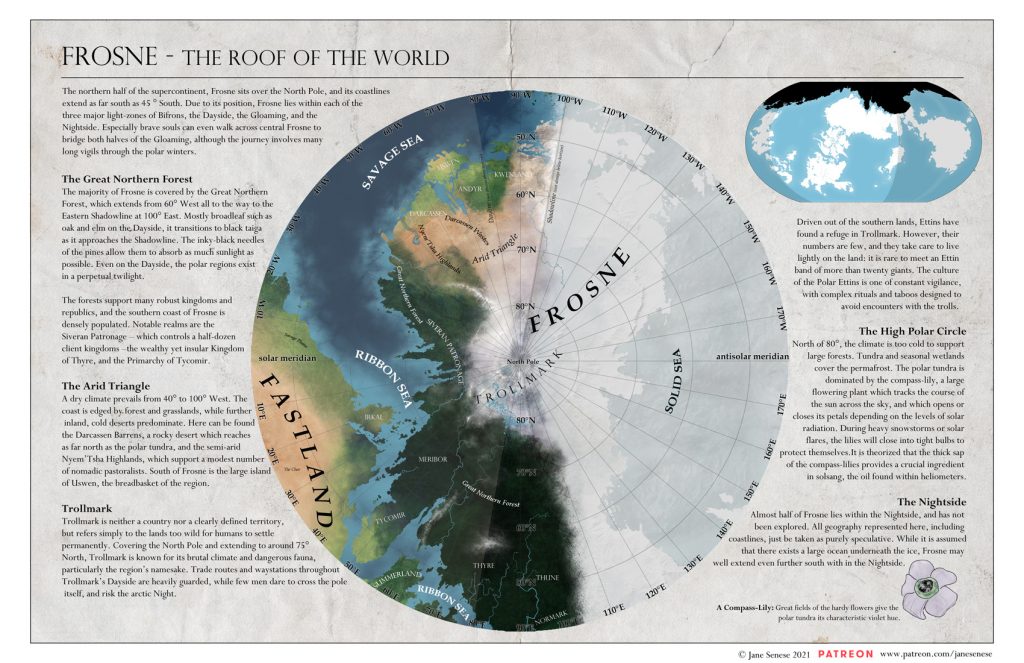Bifrons is a planet roughly the size of Earth, in a close orbit of its sun, Usil, a red dwarf star. Because of its close orbit, it is tidally-locked – one hemisphere perpetually faces the sun, the other faces away. the Dayside is covered in deserts, and a perpetual hurricane rages at the subsolar point. But for some small oases around geothermal vents Nightside is devoid of all life. But due to a slight orbital wobble, a small band experiences a day-night cycle that lasts the equivalent of 60 days on Earth. While Bifrons’ thick atmosphere helps distribute heat and moisture between the hemispheres to some extent, this is a planet of two very different characters.
The Basics:
Sun: Usil – K class Red Dwarf; 0.25 Solar Masses; temperature of 3,000 K; diameter of 312,000 miles (502,000 km)
Distance from Sun: 0.09 AU (approx 8,366,000 miles or 1,346,400 km)
Gravity: 1.2 G
Diameter: 9,554 miles at equator (15,376 km)
Orbit: Tidally locked; day/year length is 60 Earth days
Axial Tilt: 4 degrees
Plate Tectonics: Active
Average Temperature: Dayside = 323 K (50°C) ; Gloaming = 288 K( 15°C); Nightside= 193 K (-80°C)
Habitability: Life is abundant in the Gloaming, on the border between Dayside and Nightside. On the Nightside, life survives only in the oceans or around geothermal vents. On the Dayside, the conditions become increasingly hostile as one approaches the subsolar point (the Sunpole).
The human inhabitant of Bifrons – no, there’s no lost colony, they just happened to evolve there in a masterwork of convergent evolution! – are at a roughly 18th-19th level of tech. So it’s not unreasonable they have mapped the majority of the Dayside. The Nightside is a lot harder to explore, but I’ve handwaved it a little by deciding that the “educated guesses” by the world’s best geographers tend to be uncannily good. A shame they won’t recognize it for another several hundred of our years.
The cartographers and historians of the Academy of Brythenmar are considered the best in the world. Below are excerpts from their treatises on the natural world. Click to enlarge.
